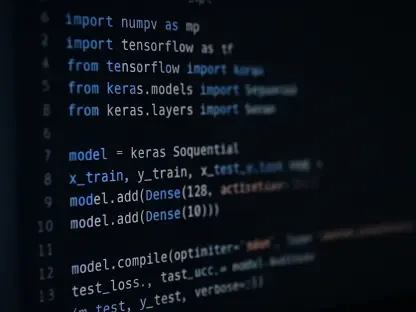The decision between using PHP or JavaScript for modern content management systems (CMS) is an ongoing debate among developers and IT managers. With WordPress remaining a dominant player, thanks to its PHP foundation, and the rising popularity of JavaScript-based solutions, many are left contemplating the future direction of their web projects. While both technologies offer unique benefits and challenges, the choice ultimately depends on the specific needs and long-term goals of your project. Understanding the differences, strengths, and potential pitfalls of each approach is essential for making an informed decision.
The Decline of PHP and Its Impact on WordPress
PHP, once a stalwart in web development, has seen a noticeable decline in popularity over the past few years. This trend is particularly evident among developers who are looking for more modern, efficient ways to handle web content. WordPress, which relies heavily on PHP, has managed to stay relevant through various updates but is still fundamentally a PHP-based CMS. Despite the introduction of JavaScript-based features like the Gutenberg editor, which offers a more dynamic user experience, the core of WordPress remains PHP-centric. This duality often creates a sense of ambivalence within the developer community, leaving many to question whether to stick with WordPress or seek alternative platforms.
The declining popularity of PHP cannot be ignored when considering the future of WordPress. With a reported 40% drop in PHP’s usage over the past two years, developers are increasingly turning to languages and technologies that provide more versatility and efficiency. While WordPress attempts to integrate more JavaScript-based functionalities, its backbone remains tied to PHP. This creates a dilemma: should developers continue to invest in a platform rooted in a declining language, or should they pivot to more modern alternatives? This is especially relevant in an era where web development practices are rapidly evolving, and the need for a CMS that can keep pace is more critical than ever.
The JavaScript Revolution: Embracing Modern Web Practices
JavaScript has become a dominant force in modern web development. Platforms like Node.js and React have revolutionized how developers approach web applications, making JavaScript an attractive option for building CMS solutions. For example, Ghost and Payload are two modern CMS platforms that fully leverage JavaScript technology. Ghost, built on Node.js, provides a decoupled architecture and RESTful JSON APIs, aligning with contemporary development trends. Payload, utilizing Node.js and React, advertises itself as a highly flexible and scalable solution, especially for those already familiar with frameworks like Next.js. These platforms offer a cohesive environment for developers proficient in JavaScript, allowing for more seamless integration and performance optimization.
The growing dominance of JavaScript is reflected in the increasing adoption of JavaScript-based CMS platforms. Developers are drawn to the versatility and scalability offered by frameworks like Node.js and React, which enable the creation of more dynamic and responsive web applications. Ghost CMS, with its streamlined, decoupled architecture, allows for greater flexibility and easier scaling, aligning well with the needs of modern web development. Similarly, Payload CMS offers robust support for React and easily integrates with JavaScript-centric frameworks. The allure of JavaScript lies in its ability to facilitate faster, more efficient development cycles, making it a compelling choice for those looking to stay ahead of the curve.
PHP’s Persistent Relevance in the CMS Ecosystem
Despite its decline, PHP is far from obsolete. Alternatives like Craft CMS and Drupal demonstrate that PHP-based content management systems can still be modern, efficient, and highly effective. Craft CMS is regarded as a cutting-edge PHP CMS, offering a user-friendly experience, customizable features, and a supportive community. Drupal, with its longstanding reputation and extensive ecosystem, remains a viable choice for enterprise-level websites. Both of these platforms illustrate PHP’s enduring reliability and adaptability, making them strong contenders for organizations that prefer to stick with PHP.
The relevance of PHP in the CMS ecosystem cannot be overstated, especially when considering the robustness and maturity of platforms like Craft CMS and Drupal. Craft CMS offers a modern take on PHP-based development, providing a highly intuitive user interface coupled with a flexible, extensible architecture. Its vibrant community and extensive array of plugins make it a go-to choice for many developers. Likewise, Drupal’s reliability and comprehensive feature set make it ideal for complex, content-heavy websites. Its long-standing reputation and extensive support network ensure that it remains a strong choice for organizations seeking stability and proven performance.
Transition Challenges and Interpretations
Switching from one CMS to another is not a decision to be taken lightly. The transition involves significant planning, resource allocation, and adaptation to new systems. Each platform comes with its own set of challenges, from data migration to training and customization. WordPress, Ghost, Payload, Craft CMS, and Drupal each have unique strengths and weaknesses. WordPress and Drupal benefit from extensive communities and a wealth of plugins and extensions, while Ghost and Payload provide modern frameworks and easier integration with current web development practices. Understanding these nuances is crucial for making an informed decision that aligns with your project’s strategic goals.
Navigating the transition from one CMS to another requires careful consideration of multiple factors, including the potential disruption to ongoing projects, the learning curve associated with new technologies, and the compatibility of existing content and functionalities. Each CMS platform offers distinct advantages that may align differently with your specific needs and goals. WordPress and Drupal’s rich ecosystems provide ample resources for support and customization, which can be invaluable during a transition. In contrast, newer platforms like Ghost and Payload, while offering modern frameworks and streamlined processes, may present challenges due to their relative novelty and smaller community bases. Weighing these factors is essential for ensuring a smooth transition and long-term success.
Community and Ecosystem Support: A Vital Consideration
One of the most significant factors in choosing a CMS is the level of community and ecosystem support. WordPress and Drupal have enormous developer communities that contribute to their extensive repositories of plugins, themes, and extensions. This support network can be invaluable for troubleshooting, customization, and staying updated with the latest security patches. On the other hand, newer platforms like Ghost and Payload, while not as established, are rapidly growing and have active communities that are passionate about innovation. Evaluating the strength and relevance of a platform’s community can greatly impact its long-term viability and ease of use.
The value of a strong community and ecosystem cannot be underestimated when selecting a CMS. A robust support network can significantly ease the process of troubleshooting, customization, and integration, making the platform more user-friendly and adaptable. WordPress and Drupal’s extensive ecosystems offer a wealth of resources, including plugins, themes, and extensive documentation, which can be invaluable for both novice and experienced developers. Conversely, Ghost and Payload, though newer and less established, are supported by active, enthusiastic communities eager to contribute to their growth and innovation. The strength of a platform’s community and ecosystem plays a crucial role in its adoption and long-term sustainability.
Balancing Innovation and Stability
The decision between choosing PHP or JavaScript for modern content management systems (CMS) remains a hot topic among developers and IT managers. On one side, PHP-based platforms like WordPress continue to dominate the market. On the other, JavaScript-based solutions are rapidly gaining traction. This leaves many grappling with the future direction of their web projects.
PHP offers a mature ecosystem with extensive documentation, making it a reliable choice for many. WordPress’s success largely stems from its PHP foundation, which provides stability and the wealth of plugins available. On the other hand, JavaScript boasts a more dynamic and responsive user experience, thanks to frameworks like Node.js and React, which provide a modern approach to web development.
Both technologies carry their own sets of benefits and drawbacks. PHP is excellent for server-side scripting and has a long track record of success. JavaScript, however, excels in creating seamless and interactive front-end user experiences. Ultimately, the best choice hinges on your project’s specific needs and long-term objectives. Thoroughly understanding the differences, strengths, and weaknesses of each technology is crucial for making an informed decision.









